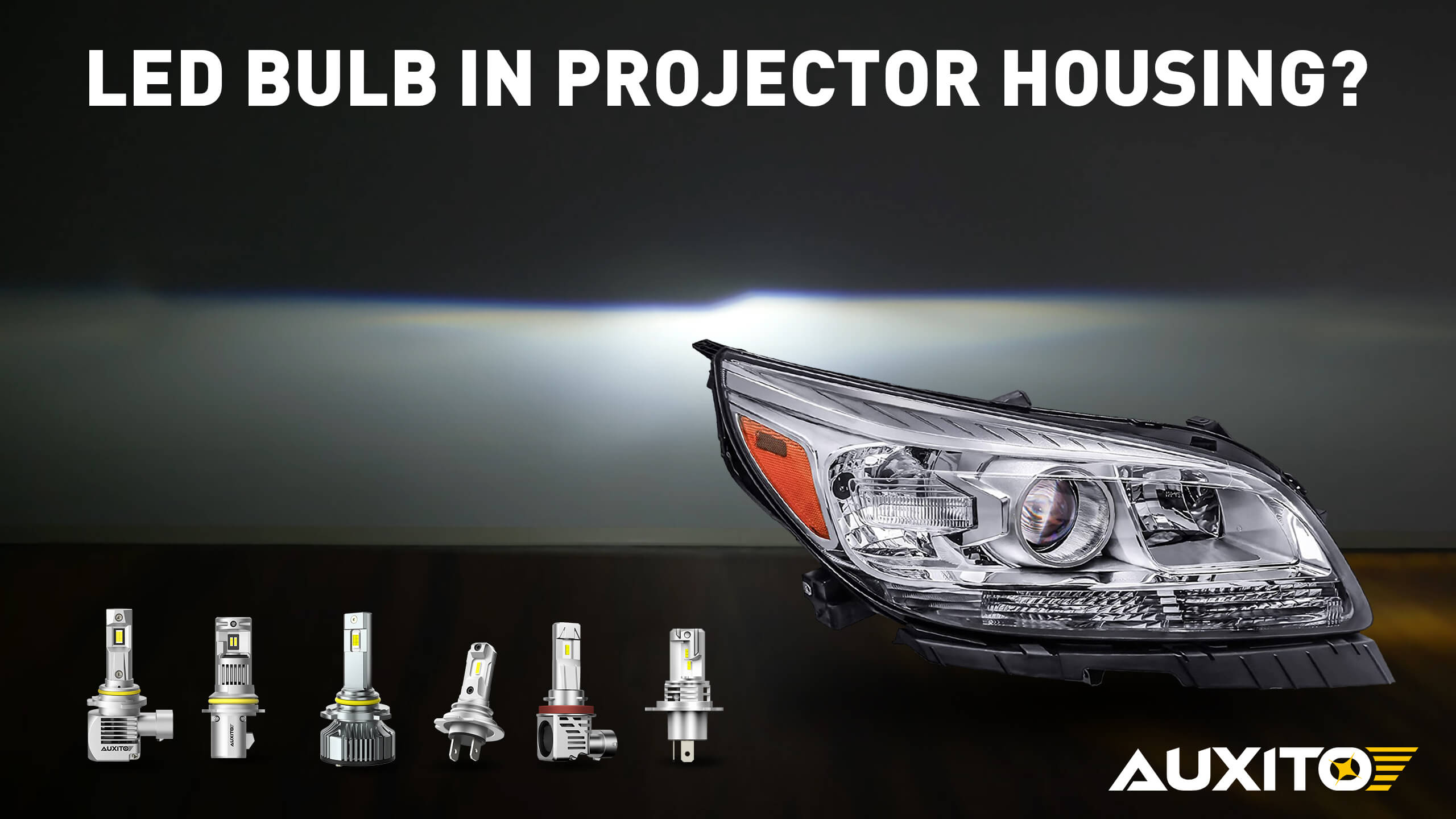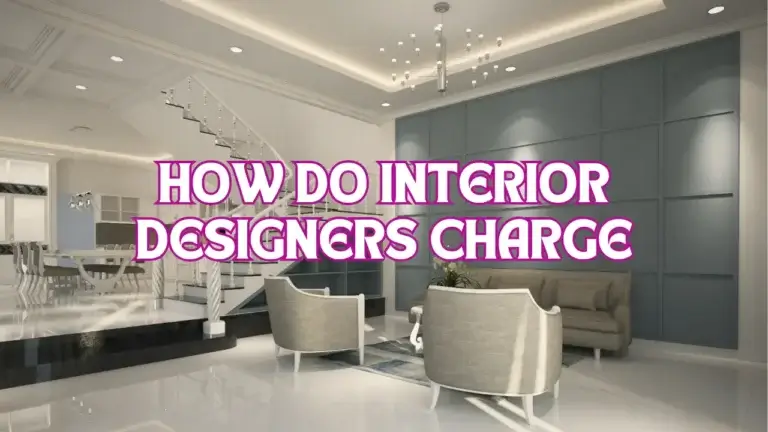Headlight LED bulbs are often called fog lights. This name causes confusion for many people.
Fog lights are special lights designed to cut through fog, rain, and snow. They sit lower on the car and provide better visibility in bad weather. While headlight LED bulbs are bright and energy-efficient, they serve a different purpose. Understanding why these terms get mixed up can help you choose the right lights for your vehicle.
This blog will clarify the differences between headlight LED bulbs and fog lights. Keep reading to learn why each type of light is important and how they improve driving safety.
Introduction To Led Fog Lights
LED fog lights help drivers see in bad weather. They cut through fog, rain, and snow. Regular headlights can reflect off the fog. This makes it hard to see. Fog lights shine low and wide. This helps you see the road better. They improve safety in tough conditions.
Regular headlights aim straight ahead. They light up the road far away. Fog lights aim lower. They light up the road close to your car. Regular headlights are brighter but scatter in fog. Fog lights are less bright but more focused. This helps you see better in foggy weather.
History Of Fog Lights
Fog lights started in the early 1900s. Cars had simple headlights back then. These lights were not strong enough. They couldn’t cut through thick fog. So, special lights were made. These lights were placed lower on the car. They helped drivers see better in fog. That’s why they were called fog lights.
Over the years, fog lights improved. Technology made them better. LED bulbs were introduced. These bulbs are brighter and last longer. They use less power too. Modern fog lights can now cut through thick fog easily. They are more efficient than old lights. Fog lights are now a standard feature in cars.
How LED Technology Works: A Guide to LED Lights in Vehicles
LED (Light Emitting Diode) technology has changed automotive lighting with lights that are brighter, last longer and use less energy, compared to regular bulbs.
How LEDs Work
LEDs emit light when an electric current flows through a semiconductor material. This process—called electroluminescence—directly translates electricity to light, with little heat production.
Key Advantages of LED Lights in Vehicles:
✅ Energy-Saving – Compared to halogens or HIDs, LEDs consume a lower amount of power — saving your battery.
✅ Long-Lasting — LEDs last significantly longer (up to 50,000 hours) than traditional bulbs.
✅ Brighter & Clearer Illumination – They emit instant and intense brightness, which enhances visibility.
✅ Speed of Response – LEDs illuminate instantly which makes them great for brake light and turn signal use.
✅ Durable & Weather-Resistant – They work in cold conditions and can endure vibrations, so they are ideal for rugged terrains.
LED Vehicle Lights: Design and Structure
The LED vehicle lights are really made for great performance and durability. Their structure includes:
- LED Bulb – Bright crisp light
- Heat Sink – Keeps temperature in-check and prevents overheating.
- Power Driver – Regulates voltage and maintains consistent operation.
This combination ensures effective illumination while consuming very little power in the process.
What are the Differences in Beam Patterns: Headlights vs. Fog Lights
🚗 Headlights (LED Bulbs Standard):
- 🔹 Designed to throw light a long distance ahead of the vehicle to guarantee visibility while normally driving.
- 🔹 Most effective during clear weather but may produce glare during foggy weather
🌫 Fog Lights (LED Fog Lamps):
- 🔹 Produce a wide and low beam that penetrates through fog, rain, and snow.
- 🔹 Minimise light reflection into the driver’s eyes by reducing glare.
- 🔹 Improve road visibility in bad weather and protect drivers.
Why Use LED Lights in Your Vehicle?
- Better Visibility: Improved night driving with a more precise beam.
- Enhanced Safety: More immediate brake and signal lights response.
- Energy Saving: More eco-friendly because it consumes less power, puts less pressure on the automobile battery.
- Low Maintenance: Rare maintenance and changes are required for LEDs.
Particularly, LED technology is the new era of automotive lighting, as it provides every vehicle improved efficiency, as well as performance and safety. No matter if it’s headlights, fog lights or brake lights, LEDs are the way to go for modern cabs. 🚗💡
The Advantages of LED Fog Lights: Safety & Efficiency
LED fog lights mean the difference between driving safely on foggy, rainy, or snowy days. They create visibility while being energy-efficient and enhance safety.
1. Better Visibility In Bad Weather 🌫
✅ Cuts Through Fog, Rain & Snow – LED fog lights emit a broad, low beam that minimizes glare, mirroring the roadway effectively.
✅ Cool, White Light — The bright white color increases contrast, which makes it easier to see obstacles, road signs, and lane markings.
✅ Fast Response Time – LEDs come on immediately, providing you with instant light when you need it.
2. Improved Safety on the Road 🚗
✅ Less Glare for Oncoming Traffic – LED fog lights won’t bounce off fog and blind oncoming traffic the way regular headlights do.
✅ Improved Peripheral Lighting – A wider spread of light, allowing drivers to see the edge of the road better.
✅ This helps improve nighttime & off-road driving when visibility is low, such as mountain roads & in rural areas.
3. Energy Efficiency & Environmental Benefits 🌍
✅ Low Power Consumption – Compared to halogen, LED fog lights consume less power which decreases the burden on the car battery.
✅ Better Mileage – The lesser the electrical system asks the engine for power, the better the fuel economy.
✅ GREEN CHOICE — Lower emissions due to high energy efficiency; LED fog lights are an environmentally friendly solution
Why Choose LED Fog Lights?
- Long Life: LED Fog Lights have a service life of up to 50,000 hours, two to three times more than halogen bulbs.
- Durable & Weather-Resistant: They resist vibrations, extreme temperatures and bad conditions.
- Stylish & Modern Design: Many contemporary vehicles are equipped with stylish LED fog lights for an upscale appearance.
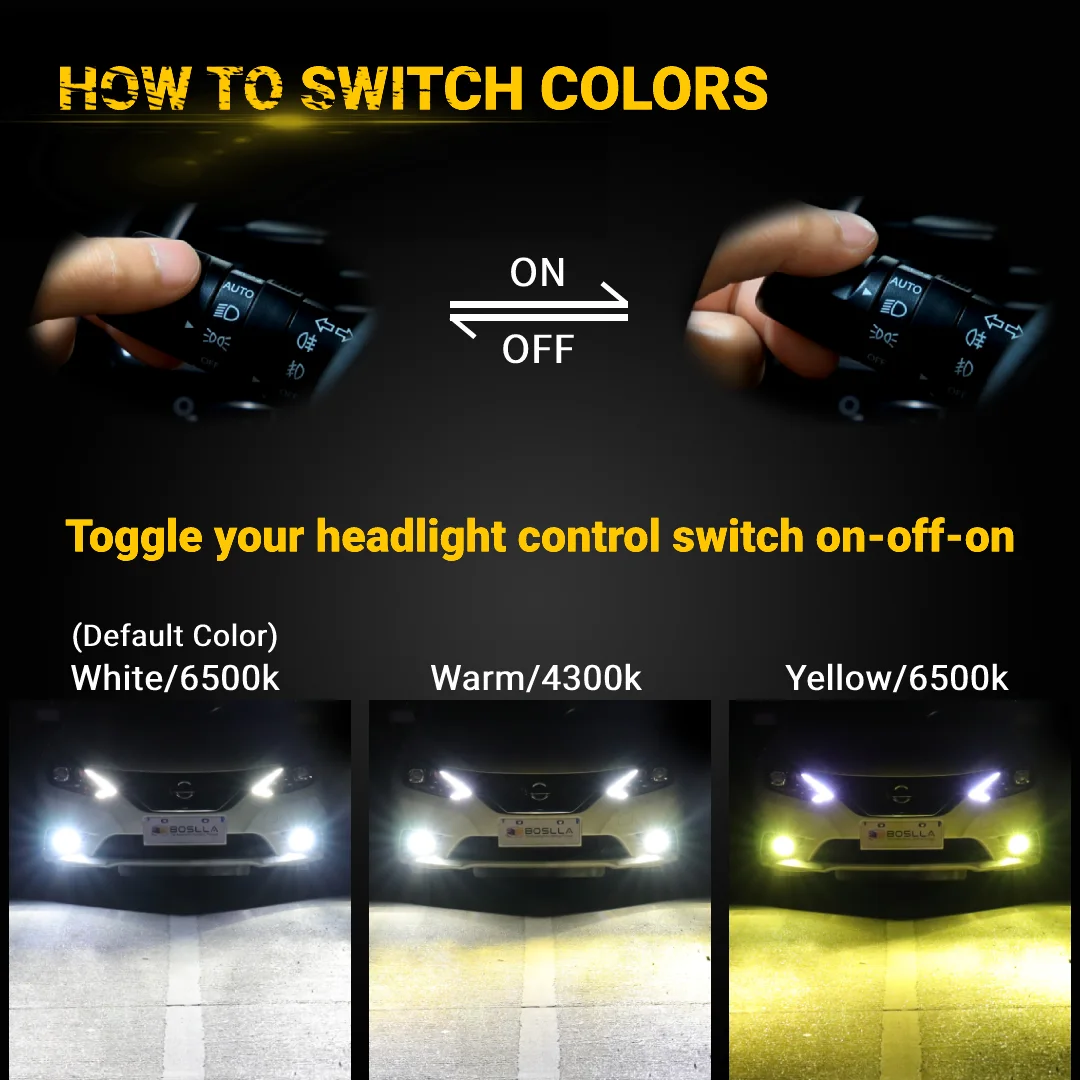
Credit: www.boslla.com
Common Misconceptions About Fog Lights 🚗
Fog lights and headlights actually serve different purposes, but many drivers make the mistake of thinking that they are the same thing. But, they are built for different driving conditions.
🚦 Fog Lights vs. Headlights: What You Need to Know
✅ Headlights: For all around visibility for night, and clear weather. They cast beam far forward to illuminate the road.
✅ Fog Lights: Intended to be used in poor visibility situations such as fog, rain, and snow. They cast a broad, low beam that penetrates mist without bouncing back as glare.
Knowing when to use what lights will help visibility and make driving safer in a wider range of conditions.
Installation & Maintenance of LED Fog Lights 🔧✨
This is an excellent upgrade that keeps the roads illuminated. Do the following for a seamless install and to keep them at their best.
🚗 How to Install LED Fog Lights
1️⃣ Shut off the vehicle and release the hood.
2️⃣ Find the fog light assembly (typically near the lower bumper)
3️⃣ Start by removing the old bulb, avoiding contact with the glass.
4️⃣ Place the new LED bulb into the socket and tighten it.
5️⃣ Ensure the lights work correctly before hitting the road
🔹 Pro Tip: Never touch the glass bulb on LED lights, always handle them by their base to avoid damage.
🛠️ How To Keep It Up and Running For Longer
✅ Wipe the lenses regularly with a soft cloth to eliminate dirt and fogging.
✅ Do not use any harsh chemicals to clean as they may also scratch the plastic cover.
✅ Check connections and make sure the wires are snug and dry.
✅ Regularly check bulbs for dulling or wear and replace them as necessary.
Maintenance ensures that your LED fog lights last longer and provide consistent light, making it safer to drive on the road.
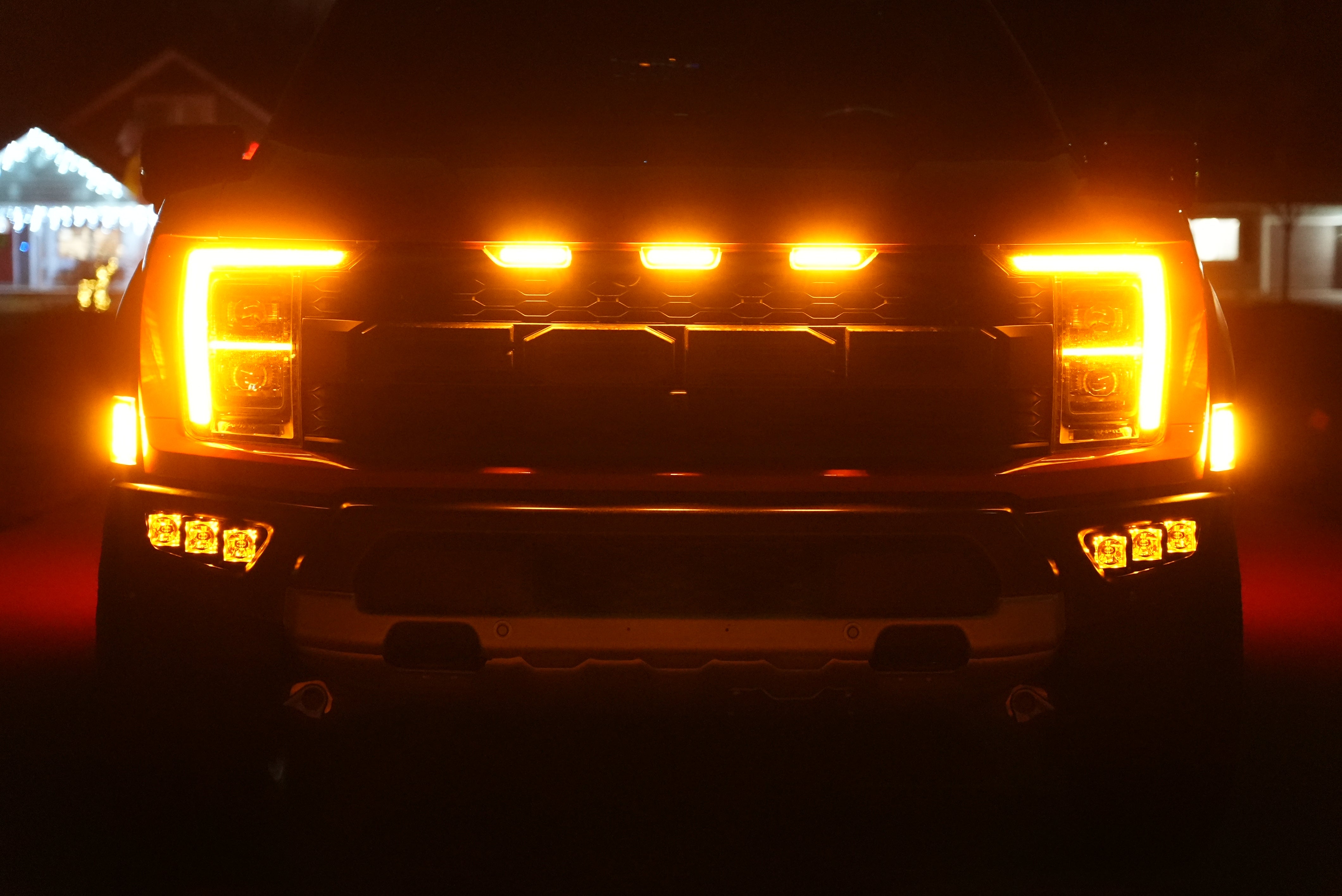
Credit: specialtyperformanceparts.com
Future Of Led Fog Lights
LED fog lights are becoming smarter. Sensors adjust the light. Brightness changes based on weather. New materials make the lights last longer. They use less power than old bulbs.
Some LED fog lights connect to phones. You can control them with an app. Colors can change for style or safety. The lights can warn other drivers.
Future LED fog lights may self-repair. If a part breaks, it fixes itself. They might also talk to other cars. This helps avoid crashes.
Another idea is road-adaptive lights. They change shape for different roads. Highways and city streets need different lights. These lights will know the difference.
Credit: www.reddit.com
Frequently Asked Questions
What Are Fog Lights Used For?
Fog lights are designed to improve visibility in fog, rain, and snow. They help illuminate the road surface directly in front of the vehicle.
Are Led Headlights Suitable As Fog Lights?
Yes, LED headlights are suitable as fog lights. They provide bright, clear illumination that cuts through fog, rain, and snow effectively.
How Do Fog Lights Differ From Regular Headlights?
Fog lights are positioned lower on the vehicle. They emit a wide, bar-shaped beam to minimize glare and improve visibility in poor weather.
Can I Use Fog Lights All The Time?
No, fog lights should be used in poor visibility conditions like fog, heavy rain, or snow. Using them unnecessarily can cause glare for other drivers.
Conclusion
Headlight LED bulbs are often called fog lights due to their function. They improve visibility in fog, rain, and snow. These bulbs cut through dense conditions. Their bright, focused beams enhance driving safety. LED technology offers better performance and durability.
They are a reliable choice for challenging weather. Always consider upgrading to LED fog lights. They make a significant difference in visibility. Stay safe, drive smart.

My name is Mahi Uddin, and I’m a blog writer with over two years of experience specializing in creating engaging, informative content using AI tools. I contribute to InExDecor.com, where I share creative ideas and practical tips for transforming interior and exterior spaces into beautiful, functional environments. With a passion for storytelling and a knack for blending creativity with technology, I strive to craft blogs that not only inform but also inspire readers. When I’m not writing, you can find me exploring design trends or enjoying a good book with a cup of coffee.

